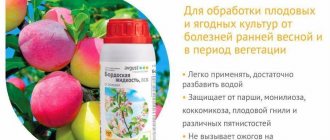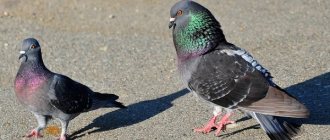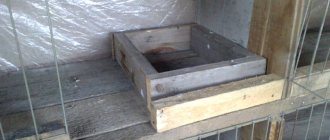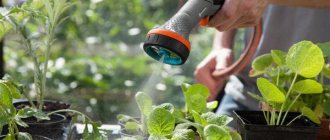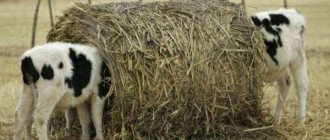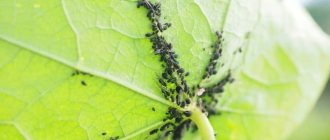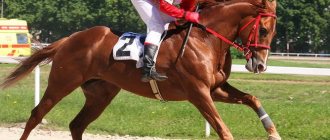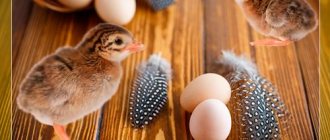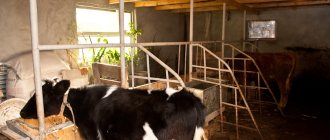Raising pigeons at home is a popular hobby. But it turns out that these birds can be kept not only for beauty. If you select special meat breeds, they can also be raised to produce elite meat. Features of breeding pigeons at home for beginners will be described in this article.
You will learn what conditions need to be provided for birds, which breeds are best to choose for home keeping, and what characteristics meat breeds have.
- What is needed for this
- Peculiarities
Requirements for keeping birds
To make breeding pigeons enjoyable and satisfying with the results, you should approach the organization of the entire process responsibly:
- build a pigeon coop and aviary convenient for birds;
- prepare balanced feed, mineral supplements and vitamins;
- carry out constant care and monitoring of the condition of the birds.
These are the basic commandments for a breeder. Neglecting even one will inevitably lead to the death of the pigeons.
Preparing the dovecote
At the initial stage, you can do without a structure specially built for birds.
Any warm room in which the temperature in winter will not fall below 10 ° C is suitable for a dovecote.
It’s better to play it safe and think through a heating system. Fence the dovecote with a rigid mesh to prevent the entry of rodents and other animals that could cause harm to the flock. In addition, the nets will prevent birds from flying away.
To prevent moisture from coming from the floor, make the flooring at a height of about 0.3 m from the ground. Make sure birds are not disturbed by drafts. Do not make the lighting in the room bright - pigeons love twilight. Build perches and perches that can be painted in different colors.
Place boxes for each bird along the walls, and they should be attached with the bottom to the wall. The cells should be 20 cm long and 40 cm high. Keep in mind that the enclosure should be spacious.
In the pigeon coop, be sure to organize a quarantine compartment where sick birds will be kept. This is also where you will identify new pigeons for a week, before they are assigned to the general flock.
Sanitation standards
The location of the dovecote should be away from sewers and cesspools, sedimentation tanks and pigsties.
Otherwise, the birds will often get sick. Regularly carry out cleaning activities and clean out drawers and compartments. Treat the space with parasite repellents and antiseptics. Follow
Feeding
Pigeons must receive a certain amount of balanced nutrition. Do not fatten the birds beyond the ration, but do not skimp on it either.
There are approximate nutritional standards for birds:
| Type of food | Percentage |
| Cereals | no more than 70 |
| Legumes | no more than 40 |
| Plant green food | no more than 25 |
| Oilseeds | no more than 5 |
| Mineral supplements | no more than 5 |
| Vitamin complex | no more than 5 |
| Vegetables and root vegetables | no more than 5 |
When creating a diet, it would be helpful to have the help of a veterinarian. It will help to optimally determine the standards, taking into account the sex, age, breed and condition of pigeons.
It is better to use ready-made grain mixtures and feed to feed birds, adding fruits, boiled vegetables, crushed chalk and shells to the diet.
The aviary should contain a container with clean drinking water for birds. It must be changed daily. For preventive purposes, it is recommended to drink a decoction of chamomile, thyme and string.
Do not use ice or snow as a source of water for pigeons. This can lead to hypothermia and illness for the birds.
Maintenance in winter
In winter, when preparing the diet of pigeons, it is important to minimize the amount of protein. This is necessary to reduce the sexual activity of birds and prevent the appearance of offspring during the cold season.
The chicks simply will not survive in such conditions.
To do this, exclude from your diet:
- wheat;
- legumes;
- bread and bakery products;
- dairy and fermented milk products, cheese;
- citrus;
- fats;
- meat and fish products.
To compensate for the lack of grains and legumes, increase the proportion of oats and barley in your diet.
Contents in summer
Summer is the time for mating and reproduction. The nutrition of pigeons undergoes important changes - the amount of protein and minerals increases in order to enhance sexual activity.
During this period, legumes should account for up to 40% of the total diet. They have the highest protein content. Peas are especially useful.
What you need to know about dovecotes
Pigeons can be kept in:
- enclosures;
- nurseries;
- cells.
The type of dovecote depends on the purpose of keeping, the number of birds, their breed, the natural features of the area and the capabilities of the breeder.
The ideal place for breeding pigeons in rural areas is an attic dovecote.
If you plan to keep a small number of pigeons, then hanging nests are suitable. Such a home provides complete freedom for pigeons.
For urban residents, an acceptable option would be to build a poultry house on the ground. For example, a free dovecote, which is mounted on a pole.
It is better to place the dovecote away from tall buildings and trees that interfere with birds taking off and landing. The breeder also runs the risk of leaving pigeons uncontrolled for a long time, since the birds will land on the roof of a high-rise building or the top of a tree. The close proximity to a dovecote can also cause a lot of trouble for owners of balconies in a residential building - pigeons will pollute them. Wires can interfere with the flight of birds and even lead to their death, so you should build a dovecote away from them.
To avoid infections, the dovecote should be placed away from garbage pits and farms.
Pigeons must find their home easily, so the home must have an identifying color and shape.
Suitable materials for construction:
- brick;
- tree;
- metal;
- boards and plywood (for interior cladding).
The room should be equipped with ventilation and electricity, and if necessary, connect an artificial heat source.
What breed of pigeons should I choose for breeding?
To choose a breed of pigeons, it is important to determine the ultimate goal of the breeding process itself.
Meat
King
English Modena
These birds are bred for the purpose of eating their meat. It is dietary, but nutritionally superior to chicken meat.
Pigeons of meat breeds are larger and more massive compared to flying and decorative individuals.
Breeds in this category include:
- King;
- English Modena, etc.
Read more about meat pigeon breeds in our next article.
Decorative
Saxon priest
Curly breed
Peacock pigeon
Such pigeons participate in exhibitions, decorate events and make up circus acts. Birds of this breed are put up for sale, receiving quite decent money. They do not require special conditions of detention.
Decorative breeds:
- Saxon priest;
- Curly;
- Pavlini et al.
Sports
Belgian homing pigeon
Russian Pigeon
Pigeons of sporting breeds are participants in sports competitions among their own kind, they are excellent at oriented in space and find their way back from various distances. Keeping such birds is possible with increased attention and responsibility towards them.
This type of rocks includes:
- English pigeon;
- Belgian Postal;
- Russian pigeon, etc.
Flight
Berlin short-billed tumbler
German monk
They are high-flying and rotating. This emphasizes the character and style of their flights. Pigeons were chosen from this breed to send mail.
The following breeds belong to this species:
- Berlin short-billed tumbler;
- German monk;
- Nikolaevsky pigeon, etc.
Disease Prevention
According to the law (in accordance with Article 18 of the Law of the Russian Federation of May 14, 1993 N 4979-1 “On Veterinary Medicine”), owners must report the presence of an animal in their yard. This will make it possible to carry out routine vaccination of birds in a timely manner, and if signs of disease appear, to prevent the spread of the epidemic.
By following sanitary rules when constructing a dovecote and raising birds, you can not only achieve the most comfortable keeping of birds, but also maintain long-term, respectable relationships with your neighbors.
Arrangement of an enclosure for couples
Dovecote with an aviary
The aviary should be sufficient in area and volume so that the pairs do not interfere with each other and do not fight for territory. Keep in mind that 1 pair requires about 1 sq. m of space.
It is important to prepare nests for pairs. They can be made from boxes, baskets and other suitable containers. For an ideal nest, you just need to make blanks. To do this, assemble a square-shaped frame from wooden elements.
It is advisable to make the bottom from a lattice to ensure ventilation. Lay straw or hay inside to prevent the eggs from breaking and freezing. Paint each box a different color.
This will help the birds choose a nest and remember the path to it. You should also lay straw, hay on the floor of the dovecote, and throw some small twigs and leaves.
If there are several pairs, hang the nests at a maximum distance from each other at a height of at least 50 cm from the floor. Intimacy and a calm environment during this period are important for pigeons.
There should be several more nests in the dovecote than there are pairs of pigeons in order to minimize bird competition.
If the pigeons have chosen a box for themselves, then it cannot be moved!
Is it possible to do without building a special room at the initial stage?
Pigeons should always be kept separate from any poultry. This will avoid the spread of diseases and create optimal living conditions for pigeons. Therefore, it is wrong to keep them in a chicken coop or poultry house. They need a separate room with a walking area, a place to rest after flights, and a mast for guidance and determining the direction of the wind.
If you build a small dovecote for 3-4 pairs, and then expand it to accommodate offspring, this will lead to additional costs. It would be advisable to build a dovecote for 10-20 pairs and fill it with new generations of birds within one year.
Do you breed pigeons yourself?
Not really
Selecting a breeding pair
To procreate, you need to choose healthy, mature birds. They must be from different litters of the same breed.
You should not take young individuals. Their reproductive system is not yet fully formed, so a couple may have a large percentage of unfertilized eggs or weak, sickly offspring.
The optimal age of birds is 3-6 years. After this age, the reproductive rate of pigeons decreases.
Lighting
Pigeons need long daylight hours (at least 14 hours), so artificial light sources are installed indoors. The health and productivity of birds depends on compliance with this rule.
If the length of daylight is reduced, the doves begin to experience delayed puberty. Red and orange lighting have a positive effect.
Types of mating
It is important for the breeder that the mating process takes place as quickly as possible. The time of appearance of the pigeons depends on this. There are two types of mating:
Forced
In this case, the process of pair formation takes place under strict human control. The breeder himself chooses the female and male. By leaving them in the same cage for a day, he gives the birds the opportunity to show sympathy for each other.
If this happens and a pair is formed, then the pigeons in the flock behave differently. When released to the rest of the birds, they will spend most of their time together, showing signs of attention to their partner.
Natural
This type of pigeon pair formation has a greater chance of chicks appearing soon. Often mating occurs the first time. As in a free life in nature, the male himself chooses an object to express sympathy and begins active courtship.
Inflating his feathers and inflating his crop to appear larger, he describes circles around the dove, making characteristic sounds.
If the female accepts courtship, she crouches to the ground and bows to the dove. The couple begins to coo and treat each other with tenderness.
Diseases of pigeons: photos of symptoms, treatment of gastroenteritis
Pigeons, like all living beings, are susceptible to various kinds of diseases. A number of pigeon diseases are common to many birds. Non-contagious ones include vitamin deficiencies, intestinal blockage, catarrhal gastroenteritis, diarrhea, fractures, obesity; infectious diseases include psittacosis, paratyphoid fever, mallophagosis, pasteurellosis, smallpox and others.
These photos show signs of diseases in pigeons:
Catarrhal gastroenteritis affects older young and adult birds. The cause of the disease is poor quality food, dirty drinking water, and various infections.
The main symptoms of this disease in pigeons: depression, loss of appetite, diarrhea; intestinal atony and anemia may develop.
If pigeons become ill, you should contact a veterinarian.
For treatment, depending on the disease of the pigeon, the following are used: antibiotics, sulfa drugs, feeding mucous decoctions of rice and flaxseed, aloe juice, castor oil, washing the crop with disinfectants.
- Author: Tatyana
Rate this article:
- 5
- 4
- 3
- 2
- 1
(2 votes, average: 3 out of 5)
Share with your friends!
Nesting
After mating, the nesting period begins. In prepared boxes, the pair builds a nest using straw and branches from the bedding on the floor of the dovecote.
The dove is directly involved in the construction, and the male only brings her building material. After formation, the female insulates the nest with her down. The period for preparing and arranging the box can range from 7 to 14 days.
Incubation period
Once construction of the nest is complete, the female lays eggs. This may take up to 3 days.
At this time, the female becomes quiet and does not leave the nest. It happens that after laying the first egg, the dove leaves the house and returns only when the second egg is released. The difference between the appearance of the chicks will be a couple of days.
Hatching of the offspring takes 20 days. To ensure everything goes well, optimize the conditions by adjusting the temperature and lighting in the dovecote.
During this important period for the couple, the male helps the dove. Twice a day he replaces her in the clutch so that the female can go out to eat. The dove tirelessly monitors the condition of the eggs, periodically turning them over. This is necessary so that they warm up evenly.
2-3 days before the date the chicks are expected to appear, spray the bottom of the nest with warm water. Moisture will make the shell less dry, and this will help the chicks break the shell during the hatching period. Dispose of litter and accumulated droppings from the box.
General impression
Large pigeons, stately, densely built. The plumage fits well to the body. The feathers are smooth and do not bristle.
Appearance – somewhat overfed and too fat pigeons. Kings really lack elegance, but they compensate for this with their seriousness and charisma: this is not a dove, but a dove that you want to address by name and patronymic.
StandardFeaturesMeat productivity
According to the standard, a king pigeon must meet the following requirements:
- The head is large and smooth. The eyes are small, in individuals with dark plumage - amber, in white pigeons and doves - dark. There are usually thin red-purple lines around the eyes.
- The beak is powerful, well developed, there are no requirements for color or degree of development. The wax is tender, as if slightly powdered.
- The neck is of medium length, moderately developed. The wings are short and densely feathered. The tail is short, poorly developed.
- The back shape is wide.
- The legs are of medium length, there is no feather cover.
In general, the king pigeon's body structure is more similar to a broiler chicken than to a pigeon. The reason for this is the purpose: this is a meat weakly flying breed.
The character of the kings is lively, combative, and sometimes aggressive.
Vitality is high. The breed is not demanding regarding breeding conditions, so there are practically no problems with breeding.
Brood quality is high. Doves of this breed are excellent mothers, they hatch eggs well, and their egg production is plentiful. The only exception is exhibition specimens: their fertility is reduced.
The king pigeon breed has the following advantages:
- high egg production in pigeons under 3 years of age;
- fast growth. By 6-8 months, king pigeons are ready to mate;
- rapid weight gain;
- preservation of the meat qualities of the breed when crossed with other pigeons.
The disadvantages are as follows:
- doves often incubate unfertilized eggs;
- tendency to obesity. Because of this, when industrially breeding pigeons for meat, king pigeons are often crossed with carrier pigeons - large birds are obtained with a large amount of meat rather than fat.
King pigeons are a meat breed. Their meat has a delicate taste, moderate fat content, high volume (especially when crossing male kings with doves of sporting breeds), and moderate fibrousness.
King pigeons are usually slaughtered for meat at the age of 4 months, when the young animals gain weight of more than 600 g and combine good mass and tenderness of meat. You can wait and slaughter males weighing more than a kilogram - but their meat is tougher and more fibrous than that of young animals.
Kings, like other meat breeds, allow the slaughter of young animals at the age of 28-35 days. However, the specific time of slaughter depends on the growth of the particular bird, feeding conditions and other features of keeping the pigeon population. Here the poultry farmer faces two problems at the same time:
- do not overcook the meat, making the meat too fatty and tough;
- do not kill too early, without allowing the young pigeons to grow to optimal condition and gain the required weight.
Checking eggs and hatchlings
For the first 5-7 days after the dove is planted on the clutch, it is better not to disturb it.
At about 8-10 days, slowly, so as not to disturb the pigeons, check the eggs for the presence of an embryo in them.
This can be done using an ovoscope or simply holding the egg up to a very bright light. When the egg is fertilized, you will see a dark spot with a network of diverging blood vessels. This is an embryo.
If the egg is transparent without spots inside, it is removed and replaced with a dummy.
The chicks are born weak, without feathers and blind. The couple warms them up and feeds them for the first time a couple of hours later. If the first feeding is delayed for more than a day, the pigeons will die.
The breeder should check whether the offspring hatched healthy. This is determined by the condition of the yolk sac. If it is not fully retracted, the chick dies.
Inspecting chicks for defects
When the offspring are born, it is advisable to check them for defects. These can be both visible physical deformities and disturbances in the functioning of internal organs, manifested in cyanosis of the skin, abnormal heart rhythm, etc.
If there are obvious developmental abnormalities, remove the chick from the nest. The second pigeon will receive more nutrition and a chance to mature. Such measures are necessary to maintain the health of the flock in the future and preserve the “purity” of the breed.
If a pair of pigeons has had more than their first litter of chicks with defects, then do not allow them to nest again.
Feeding hatched pigeons
For the first 10-12 days from birth, the female feeds the pigeons with milk secreted by special glands in the mother’s crop. By the second week, the dove leaves a few grains in this milk so that they soak and become soft.
So she gradually accustoms the chicks to solid food. The duration of feeding with goiter milk has a positive effect on the health of the offspring.
If the parents die or abandon the pigeons, try placing them with another pair or feeding the chicks yourself. Instead of goiter milk, warmed egg yolk is suitable. Babies will have to be fed 6 times a day.
This is convenient to do with a syringe and pipette. When the chick has eaten, its crop will be swollen and hard.
From the age of 14 days, add chopped grains and vegetables to the diet. By three months, the young animals switch to the normal diet of the entire flock.

